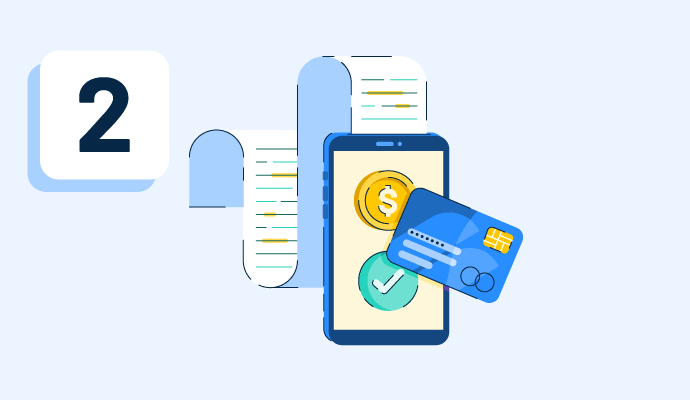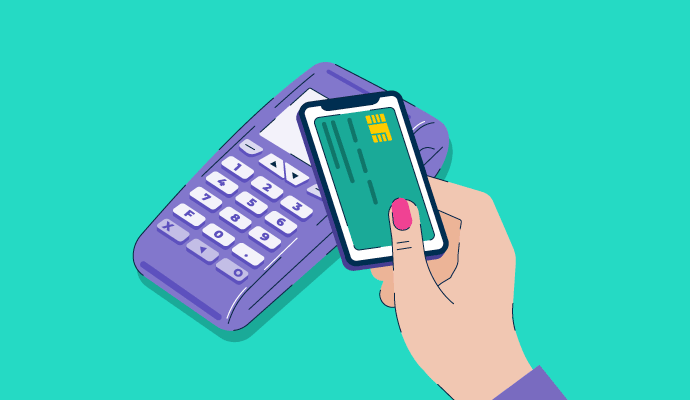What is a 2D payment gateway?
A 2D payment gateway is a type of payment interface that processes customer details, like debit or credit card numbers, during online transactions.
Payment systems that use 2D gateways are the simplest form of payment authentication and require the least amount of information to transfer money from the customer’s bank or credit card provider to the merchant’s bank.
Specialist payment gateway software is used to transmit this information between banks securely during checkout, enabling an instant transfer if the payment method is accepted.
Basic elements of 2D payment gateways
All 2D payment systems involve two separate parties – the customer and the merchant. Regardless of the type of POS system being used, the process for payments using 2D gateways entails:
- A “buy now” button on a website or in-person card machine. This is the point when a customer inputs their card information, and the transaction begins.
- A balance check via the payment gateway. Before payment, the gateway checks if a customer has enough money in their debit account or balance on their credit card for the amount of the sale.
- Encrypted card data is sent to the card network. If the second step is successful, the card’s information is securely passed to the credit card network via the gateway to complete the transaction.
- Approval or disapproval via the network. If the network finds the card to be compliant, the sale is approved, and the gateway passes the information back to the merchant’s POS system to finish the sale and receive the funds.
Benefits of 2D payment gateways
Although there are increased security risks in using 2D payment gateways over 3D, additional benefits make 2D payment options popular.
- Instant approval for customers. As the 2D payment process only requires basic card information, rather than additional identifiable features, payments go through much faster. This can improve customer satisfaction with a business and encourage future purchases.
- Transactions made using only a card. For physical stores, a payment system that only requires a card to complete a sale can help customers in a hurry. 3D payment gateways often require a phone for OTP confirmation codes.
- Integrations with other software. Since 2D payment gateways are so simple, they can usually integrate with technology that a merchant is already running. Even the simplest POS systems have capabilities for payment processing using 2D gateways.
Best practices for 2D payment gateways
Regardless of the type of business or payment gateway used, sellers should aim to follow these best practices to support secure card payment options for their customers.
- Use a compliant payment account. The Payment Card Industry Data Security Standard (PCI DSS) is a globally-recognized set of standards that all merchants should comply with. Most payment gateways and merchant account providers already have PCI compliance within their software, but it’s important to double-check.
- Enable fraud prevention technology. Because 2D payment gateways are less secure than 3D gateways, it’s essential to add extra fraud protection to keep merchants and customers safe. Tools like reCAPTCHA for online stores can prevent bots from testing stolen credit card details.
- Use a security certificate for any online store. A secure socket layer (SSL) certificate for online stores adds an additional layer of security by encrypting data between the store and customer devices. Sites that have this are denoted with an https:// at the start of their URLs, in contrast to sites that begin with http://, indicating a lack of an SSL certificate.
2D vs. 3D payment gateways
Most payment gateways used in both e-commerce and brick-and-mortar stores are virtual point of sale (POS) systems that facilitate card transactions. While only one type of 2D payment gateway exists, there are important differences between 2D and 3D payment systems.
- 2D payment gateways allow customers to complete purchases using only their card number, card expiration date, and card verification value (CVV) number. No additional security measures are taken before the translation is made.
- 3D payment gateways are more secure and require customers to give a one-time password (OTP) to validate the translation. While this may take longer for a customer to make a purchase, the added security benefits mean that many merchants prefer this type of gateway.
Protect store and customer data with efficient and security compliant retail POS systems.

Holly Landis
Holly Landis is a freelance writer for G2. She also specializes in being a digital marketing consultant, focusing in on-page SEO, copy, and content writing. She works with SMEs and creative businesses that want to be more intentional with their digital strategies and grow organically on channels they own. As a Brit now living in the USA, you'll usually find her drinking copious amounts of tea in her cherished Anne Boleyn mug while watching endless reruns of Parks and Rec.

